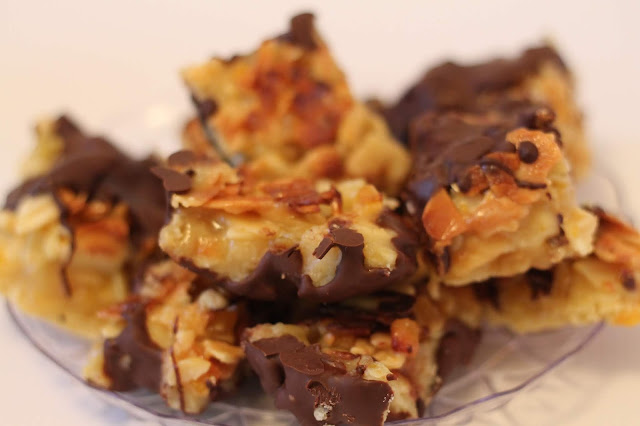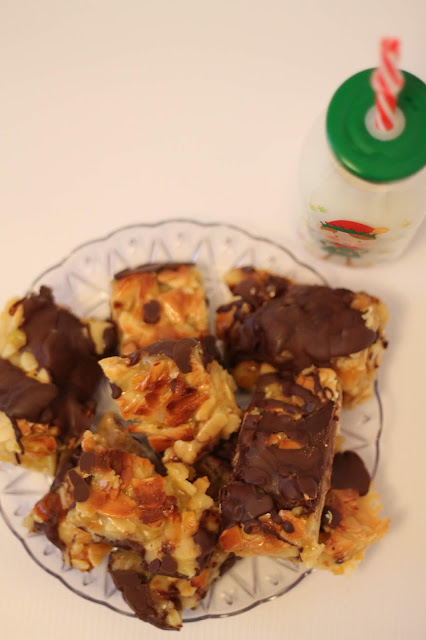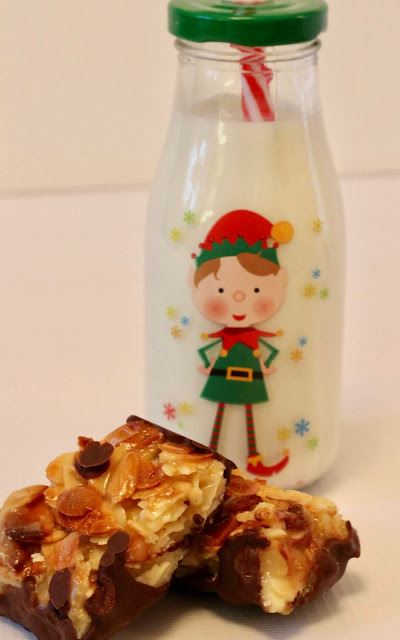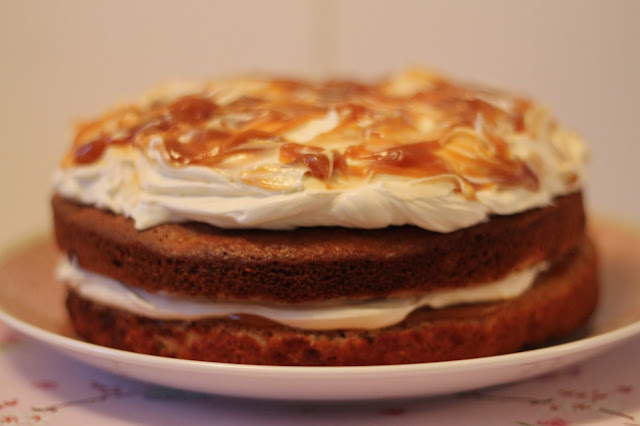Dang, it’s mid-December already. How did that happen?! At the start of this year, I was determined to work harder on this blog and produce at least one post a month. Clearly I have failed miserably. Rubbish, I know, but hopefully you will forgive me when I explain why I've been AWOL for so much of 2018...

Yes, I bring good tidings and Christmas cheer in the form of a new addition to the Darbyshire family – due in about five weeks’ time!

Understandably, you may be wondering why, if the baby isn't here yet, I've been too busy to post anything new. Not to put too fine a point on it, for the first three months of pregnancy, I really couldn't face food - even chocolate, which I've very rarely gone a day without. After that, well, I suppose Dr D and I just got busy with baby prep. There was a nursery to be decorated, antenatal classes to be attended, adorable clothing to be bought, yada yada...

So now we find ourselves in December with only a paltry number of posts to show for the year. I can but endeavour to make it up to you with this current festive offering.

I'm going to be honest with you here. these biscuits were a bit tricky to make. Not necessarily difficult, just faffy. If that's not your style, stick with my easier Christmas shortbread, but if you're up for a challenge, definitely try these. I wasn't sure how they'd turn out but people raved about them, so I'd say they're worth the faffage. Some felt they tasted more like cake or cookies than shortbread, but either way, they were no complaints, so I'd say give them a go.

Now, I shall take this opportunity to wish you a very Merry Christmas and a wonderful New Year. Hopefully we shall be reacquainted early in 2019, but I know better than to make any promises this time around. If it does take me a while to get back to the blog, at least you'll know the (very happy) reason why!
For the shortbread:
- 250g plain flour
- 125g corn flour
- 250g unsalted butter, softened
- 125g caster sugar
- 120ml double cream
- Finely grated zest of 1 orange
- 225g caster sugar
- 1 tablespoon golden syrup
- 80ml water
- 120ml honey
- 115g unsalted butter
- 320g flaked almonds
- 115g finely diced mixed peel
- 340g plain chocolate (40-50% cocoa)
To make the shortbread, start by greasing a lining the baking sheet with greaseproof paper and pre-heating the oven to 160c (fan).
Place the flour, corn flour, butter, and caster sugar in the bowl of a food processor and pulse until the mixture comes together to form a soft dough.
Tip the dough onto the baking sheet and press it firmly and evenly out over as much of the sheet as possible. I was left with about a 5cm x1 7cm gap at the end as my sheet was too large for all the dough. Not the end of the world, but it's better if you can a smaller one as it'll make life easier when making the Florentine topping.
Prick the dough all over with a fork, then chill in the fridge for 10 minutes. After this, bake for 20 mins, remove from the oven and transfer the baking sheet onto a wire cooling rack.
At this point, turn the oven temperature up to 180c (fan).
To make the Florentine topping, put the cream in a small saucepan with the orange zest. Place over a medium heat until the cream starts to bubble, then remove from the heat and set aside to infuse.
Place the sugar, golden syrup and water into a medium to large heavy-based saucepan and bring to a boil over a medium heat, resistng the temptation to stir. The mixture will caramelise gently. As you see this happening (the sugar and syrup will dissolve and you'll start to get a light blonde colour), swirl the pan from time to time. After about five minutes, the caramel should become a dark blonde colour.
Once the caramel is dark blonde, remove it from the heat and carefully pour in the warm, infused cream and add the honey and butter.
Place back on a medium heat and bring to a simmer for 3-4 minutes, stirring now and then to help the butter to melt. Then remove completely from the heat and fold in the flaked almonds and mixed peel.
Now the faffy bit (if your baking sheet, like mine, is too large): Pour/spread the caramel mix over the shortbread base using a spatula or palette knife. If you have too large a baking sheet, you will find some of the caramel will start to run off the biscuit into the bit of the sheet where there's no biscuit dough. Try to gently pour it back over the biscuit but don't fret about it too much - most of it will stay on the biscuit dough.
Return to the oven and bake at 180c for a further 15 minutes until the florentine topping is golden.
Transfer the baking sheet onto a cooling rack. If you want, at this point you can try with a spatula to spread the caramel that's run off into any gaps back over the biscuit (see what I mean about needing patience?!). Then leave to cool completely.
Once cool, run a palate knife around the edge of the baking sheet to loosen and slide the parchment paper onto a work surface. Cut the shortbread into squares or rectangles (as big or small as you please!) using a sharp, large knife. You may find it's very crumbly and not easy to cut, if so, try refridgerating for a while before cutting, but avoid the caramel going too hard, otherwise cutting will really get difficult.
Lastly, line 2 large baking sheets with wax paper and melt the chocolate in a bowl in a microwave or over a bain marie. Dip each biscuit into the chocolate and then set it on the prepared baking sheets. If you want pretty biscuits, try dipping just a corner. I ended up dipping the whole biscuit base (or in some cases, for a bit of variety, the caramel top) as it was quicker and I like more chocolate on them.
Refrigerate until the chocolate is set. Stored in an airtight tin, the biscuits will last a good 6-7 days.






















